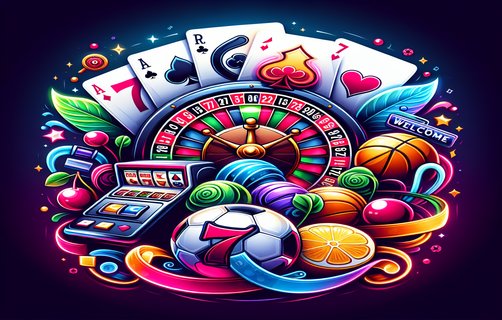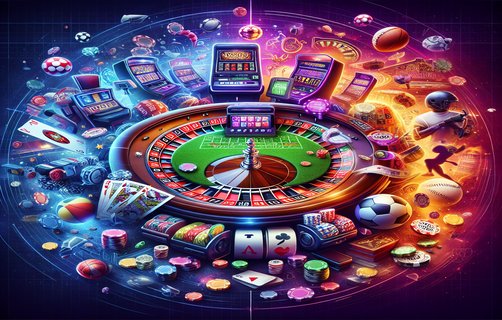Strategic Depth in the Card Game 29
कार्ड गेम 29 में रणनीतिक गहराई
The card game 29, popular in various cultures, presents an intricate blend of luck and skill. Understanding the mechanics and nuances of this game is essential for any player looking to excel. One of the key elements influencing gameplay is the role of dice. Dice can introduce an unpredictable element that can significantly affect the game's outcome, but how they are used can also be defined by player strategy. Particularly, the allocation of dice rolls can enhance tactical decisions and plays, allowing players to leverage chance to their advantage.
Game end triggers are another significant factor in 29. Players must be acutely aware of conditions that lead to the termination of the game, whether through reaching a specific score or fulfilling particular game objectives. These triggers create a dynamic where players must strategize not only to maximize their points but also to inhibit their opponents’ progress towards these triggers, resulting in a fascinating tug-of-war scenario.
Balancing luck and skill is crucial; while luck can determine the initial hand dealt, skill governs how players adapt their strategies and play style throughout the game. The incorporation of status cards, which provide unique benefits or modifications to gameplay, enhances this balance. Each card can significantly shift power dynamics and requires players to be adaptable and strategic in their choices. Players must evaluate when to deploy these cards for maximum benefit, often requiring forward-thinking and anticipation of opponent moves.
The concept of endgame zones further adds layers of complexity to the strategy. These zones may offer greater rewards or penalties, compelling players to navigate them wisely. Skilled players will often manipulate the positioning within these zones, creating opportunities to push advantages or respond to threats effectively.

Finally, the mercenary leader role may alter the game's overall strategy. This role could escalate competitive dynamics, as this leader's decisions could sway the game significantly. By acknowledging the impact of such a role, players can develop a more nuanced approach to strategy that considers not only their moves but also their position relative to the mercenary leader.
In conclusion, the card game 29 melds traditional gameplay with elements of luck, skill, and strategic positioning. Players who master these dynamics will find themselves on the path to victory, demonstrating that success in 29 comes from a blend of careful planning, adaptability, and insight into opponents’ tactics.
कार्ड गेम 29, जो विभिन्न संस्कृतियों में लोकप्रिय है, भाग्य और कौशल के जटिल मिश्रण की पेशकश करता है। इस खेल की तकनीकों और बारीकियों को समझना किसी भी खिलाड़ी के लिए आवश्यक है जो उत्कृष्टता प्राप्त करना चाहता है। खेल के तंत्र को प्रभावित करने वाले प्रमुख तत्वों में से एक है पासा का खेल। पासे एक ऐसा अप्रत्याशित तत्व पेश कर सकते हैं जो खेल के परिणाम को महत्वपूर्ण रूप से प्रभावित कर सकता है, लेकिन उनका उपयोग कैसे किया जाता है, यह भी खिलाड़ी की रणनीति द्वारा परिभाषित किया जा सकता है। विशेष रूप से, पासा रोल के आवंटन से तालिकाओं के निर्णय और खेलों में सुधार हो सकता है, जिससे खिलाड़ियों को अपने लाभ के लिए मौके का लाभ उठाने की अनुमति मिलती है।
खेल के अंत को प्रेरित करने वाले ट्रिगर्स 29 में एक और महत्वपूर्ण कारक हैं। खिलाड़ियों को उन स्थितियों के प्रति बेहद सतर्क रहना चाहिए जो खेल सन्निवेश से उद्देश्य या लक्ष्य प्राप्त करने के अंत के रूप में कार्य करती हैं। ये ट्रिगर्स एक गतिशीलता बनाते हैं जहां खिलाड़ियों को न केवल अपने अंकों को अधिकतम-वृद्धि करने की रणनीति बनानी पड़ती है, बल्कि अपने प्रतिकूल के प्रगति को इन ट्रिगर्स की ओर बाधित करने के लिए भी। इस परिदृश्य में एक रोमांचक संघर्ष उत्पन्न होता है।

भाग्य और कौशल का संतुलन अत्यंत महत्वपूर्ण है; जबकि भाग्य प्रारंभिक हाथ का निर्धारण कर सकता है, कौशल खिलाड़ियों को खेल की रणनीतियों और खेलने के शैली के अनुसार ढालने पर निर्भर करता है। स्थिति कार्डों का समावेश, जो खेल में अद्वितीय लाभ या संशोधनों को प्रदान करते हैं, इस संतुलन को बेहतर बनाता है। प्रत्येक कार्ड शक्ति के गतिशील को काफी हद तक बदल सकता है और खिलाड़ियों को उनके विकल्पों में अनुकूलता और रणनीति की आवश्यकता होती है। खिलाड़ियों को यह पूरी तरह से समझना होगा कि उन्हें अधिकतम लाभ के लिए ये कार्ड कब लागू करने हैं, अक्सर खिलाड़ियों को पूर्व-चिंतन और प्रतिकूल के चालों की पूर्वानुमान करने की आवश्यकता होती है।
अंत खेल क्षेत्रों की अवधारणा और जटिलता में पूर्वानुमान जोड़ती है। ये क्षेत्र अधिक पुरस्कार या दंड की पेशकश कर सकते हैं, जो खिलाड़ियों को समझदारी से नेविगेट करने के लिए मजबूर करते हैं। कुशल खिलाड़ी अक्सर इन क्षेत्रों के भीतर स्थिति को मोड़ सकते हैं, अवसरों को आगे बढ़ाने या प्रभावी रूप से धमकियों का उत्तर देने के लिए।
अंत में, भाड़े के नेता की भूमिका खेल की समग्र रणनीति को बदल सकती है। यह भूमिका प्रतिस्पर्धात्मक गतिशीलता को बढ़ा सकती है, क्योंकि इस नेता के निर्णय खेल को महत्वपूर्ण रूप से प्रभावित कर सकते हैं। इस तरह की भूमिका के प्रभाव को समझकर, खिलाड़ी रणनीति के प्रति एक अधिक बारीक दृष्टिकोण विकसित कर सकते हैं, जो केवल उनके चालों पर नहीं, बल्कि भाड़े के नेता के सापेक्ष उनकी स्थिति पर भी विचार करते हैं।
निष्कर्ष में, कार्ड गेम 29 पारंपरिक खेल के तत्वों को भाग्य, कौशल और रणनीतिक स्थान को जोड़ता है। जो खिलाड़ी इन गतिशीलताओं पर महारत हासिल करते हैं, वे जीत के मार्ग पर चलेंगे, यह दर्शाते हुए कि 29 में सफलता सावधानीपूर्वक योजना, अनुकूलता और प्रतिकूल की रणनीतियों की अंतर्दृष्टि से आती है।

comments
CardMaster99
This analysis provides great insights into the strategies of 29. I'm looking to improve my game!
LuckBeALady
Balancing luck and skill is crucial in 29! I love the mention of dice mechanics.
Strategist24
The concept of status cards adds a layer of excitement. Can't wait to try some new strategies!
GamingGuru
Endgame zones make the game unpredictable and fun. Great read!
PlayerX
The mercenary leader role intrigues me. I'd love to experiment with that in my next game!